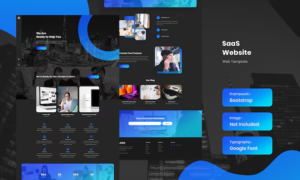Introduction
Are you ready to harness the power of radio advertising and make your brand soar through the airwaves? Look no further! In this step-by-step tutorial, we will guide you through the captivating world of radio marketing. Whether you’re a small business owner aiming to reach local customers or a big corporation looking for nationwide exposure, this blog post is your ultimate resource. Get ready to tune in and discover how to create impactful radio ads that will not only captivate listeners but also drive real results for your business.
Radio Advertising
Radio advertising has been around for almost a century, and it is still one of the most effective ways to reach a large audience. With the rise of digital media, some may think that radio advertising has lost its relevance, but statistics show otherwise. In fact, according to Nielsen’s Total Audience Report, radio reaches over 92% of adults every week in the United States alone.
Step-by-Step Tutorial on Advertising on the Radio
Step 1: Define Your Target Audience
Before you dive into advertising on the radio, it is important to first define your target audience. This will help you create effective and targeted ads that resonate with the right people. Here are some key steps to follow when identifying your target audience:
1. Understand Your Product/Service: The first step in defining your target audience is to have a clear understanding of your product or service. What problem does it solve? Who is it meant for? Knowing this information will give you a starting point for identifying potential customers.
2. Conduct Market Research: Market research is crucial in understanding who your potential customers are. You can do this through surveys, focus groups, or analyzing data from previous campaigns. Look at factors such as demographics (age, gender, income), psychographics (interests, values, lifestyle), and behavior (buying habits, media consumption) to get a better understanding of who would be interested in your product or service.
3. Analyze Your Current Customers: If you already have an existing customer base, take a closer look at them to identify common characteristics and patterns. This can give you valuable insights into who your target audience may be.
4. Consider the Radio Demographics: It’s important to understand the demographic makeup of radio listeners in general. According to Nielsen Audio’s latest report, approximately 59% of weekly radio listeners are between the ages of 18-54 years old and 53% are female.
Step 2: Choose the Right Radio Station
Choosing the right radio station is a crucial step in successfully advertising on the radio. It can make all the difference in reaching your target audience and maximizing your return on investment. Here are some key factors to consider when selecting which radio station to advertise on:
1. Audience Demographics: The first thing you need to do is understand your target audience. Consider their age, gender, income level, interests, and geographical location. This will help you narrow down which radio stations have a similar audience profile.
For example, if you are targeting young professionals living in urban areas, then a pop or top 40s music station would be a good fit. On the other hand, if your target audience is retirees living in rural areas, then a country music station may be more effective.
2. Reach and Frequency: Reach refers to the number of people who listen to a particular radio station within a specific time frame, usually measured in terms of thousands (e.g., 100 thousand listeners). Frequency refers to how often those listeners tune in to that particular station.
When choosing a radio station for advertising, it’s essential to strike a balance between reach and frequency. A high reach means more people will hear your ad at least once but may not remember it due to lack of repetition. On the other hand, high frequency ensures that your ad is heard multiple times by fewer people.
3. Time of Day: Different audiences tune into the radio at different times of the day. For example, morning drive time (6am-10am) is popular with commuters, while afternoon drive time (4pm-7pm) is popular with people on their way home from work.
Consider your target audience’s daily routine and choose a radio station that aligns with it. If you are promoting a breakfast deal at your restaurant, then advertising during morning drive time may be more effective.
4. Format and Genre: Radio stations have different formats and play different genres of music or talk shows. It’s crucial to select a format that resonates with your target audience.
For example, if you are promoting a fitness center, then advertising on a sports talk radio station would be a good fit. If you are promoting a new fashion line, then advertising on a pop or top 40s music station may be more effective.
Step 3: Create an Effective Ad Message
Now that you have identified your target audience and selected the right radio station to advertise on, it is time to create an effective ad message. This is arguably the most crucial step in the advertising process as it directly impacts how your brand will be perceived by listeners and ultimately, how successful your campaign will be.
Here are some key elements to consider when crafting an effective ad message:
1. Know Your Unique Selling Proposition (USP)
Before creating any type of advertisement, it is important to know what makes your product or service stand out from others in the market. This unique selling proposition should be at the core of your ad message and highlight why potential customers should choose your brand over others. It could be a specific feature, price point, or benefit that sets you apart.
2. Keep It Simple and Clear
Radio ads are limited by time constraints, so it is important to keep your message clear and concise. Avoid using technical jargon or complex language that may confuse listeners. Instead, focus on a simple yet powerful message that will grab their attention and leave a lasting impression.
3. Use Emotion
The best advertisements evoke emotion in their audience – whether it’s humor, nostalgia, fear, happiness or even sadness. By connecting with listeners on an emotional level, they are more likely to remember your brand and take action after hearing your ad.
Step 4: Determine Your Budget and Negotiate Rates
After completing the previous steps of identifying your target audience, choosing a radio station, and creating an effective ad, it’s time to determine your budget and negotiate rates for your advertising campaign. This step is crucial in ensuring that you get the most out of your investment while reaching your desired audience effectively.
1. Set Your Advertising Budget
The first step in determining your budget is to assess how much you are willing to spend on radio advertising. Consider factors such as the size of your business, the potential return on investment, and any other marketing expenses you may have. It’s important to set a realistic budget that aligns with your overall marketing goals.
2. Understand Different Pricing Models
There are various pricing models used by radio stations when it comes to advertising rates. The two most common ones are cost per thousand (CPM) and cost per point (CPP). CPM refers to the cost of reaching one thousand listeners while CPP is based on the rating points of a specific demographic group. Each model has its own advantages, so it’s essential to understand them before negotiating rates.
3. Research Station Rate Cards
Most radio stations have rate cards that outline their pricing structure for different time slots and demographics. These rate cards can be helpful in getting an idea of what you can expect to pay for advertising on a particular station.
Step 5: Track and Measure Results
Once your radio advertisement has been successfully aired, it’s important to track and measure its effectiveness. This will allow you to understand if your campaign is reaching the right audience and if it’s generating the desired results. Here are some key steps to help you track and measure the results of your radio advertising:
1. Set Clear Objectives: Before launching your radio campaign, make sure to define clear objectives that align with your overall marketing goals. These objectives can be related to increasing brand awareness, driving website traffic, or boosting sales. Having clearly defined goals will make it easier for you to track and measure the success of your campaign.
2. Utilize Call Tracking: One of the most effective ways to track the impact of your radio advertising is through call tracking. This involves using a unique phone number in your ad which allows you to accurately measure how many calls are generated from your radio campaign.
3. Monitor Website Traffic: Another way to gauge the success of your radio ad is by monitoring website traffic during and after its airing. You can use tools like Google Analytics or other web analytics software to see if there was an increase in website visits during the time period when your ad was running.
4. Conduct Surveys: Conducting surveys can also provide valuable insights into the effectiveness of your radio advertisement. You can ask customers if they heard about your brand on the radio and how often they listen to that particular station or show where you advertised.
Tips for a Successful Radio Ad Campaign
A successful radio ad campaign can be a highly effective way to reach potential customers and increase brand awareness. However, creating an impactful and memorable radio ad takes careful planning and execution. Here are some tips to help you create a successful radio ad campaign:
1. Know your target audience: The first step in any successful marketing campaign is knowing who your target audience is. This will help you tailor your message and choose the right radio stations that align with their interests and demographics.
2. Understand the power of sound: Radio ads rely solely on audio to capture listeners’ attention, so it’s essential to understand the power of sound. Consider using music, sound effects, or catchy jingles to make your ad stand out from others.
3. Keep it simple and concise: With limited time for each ad spot, it’s crucial to keep your message clear, concise, and easy for listeners to understand. Avoid using complicated language or long-winded sentences that may confuse or bore listeners.
4. Be creative: Don’t be afraid to think outside the box when creating your radio ad. A unique or unexpected approach can grab listeners’ attention and make them remember your brand.
5. Use a call-to-action (CTA): Including a strong CTA in your radio ad is vital as it prompts listeners to take action after hearing your advertisement. It could be directing them to visit your website, call a phone number, or visit a physical location.
Conclusion
Radio advertising can be a valuable addition to your marketing strategy when approached strategically and thoughtfully. By defining your objectives, knowing your audience, being creative, keeping it simple, utilizing professional production, and monitoring results, you can make the most out of your investment in this powerful medium.

































